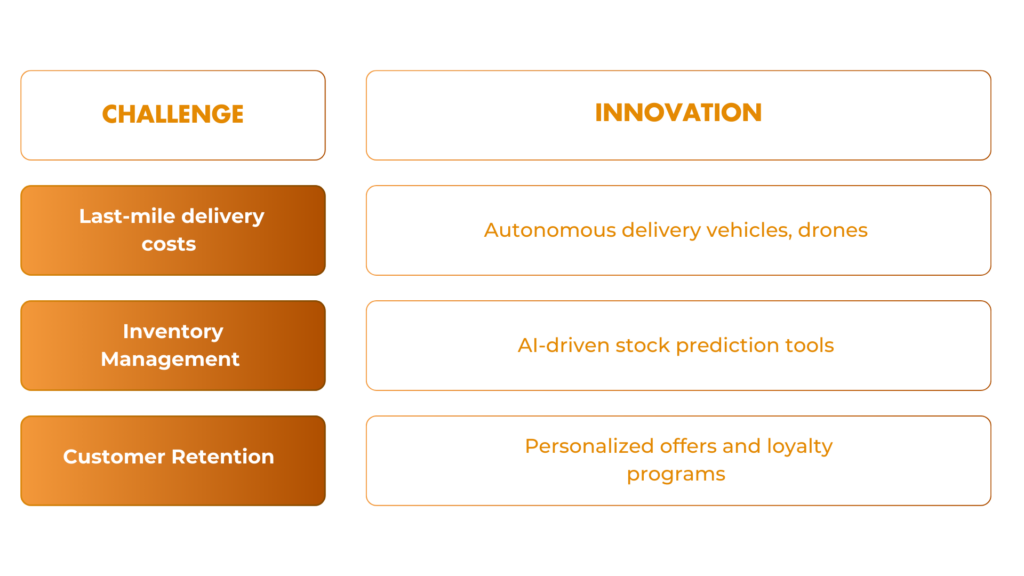Imagine ordering groceries for a dinner party and having them arrive at your doorstep within 20 minutes. This level of convenience, once a dream, is now a reality thanks to the advent of quick commerce. From delivering essentials at record speed to reshaping consumer expectations, quick commerce has revolutionized retail. But what does the future hold for this rapidly evolving sector? Let’s delve into the dynamics of hyperlocal delivery and explore what lies beyond in the future of quick commerce.
The Rise of Hyperlocal Delivery
Hyperlocal delivery has emerged as a cornerstone of quick commerce. This model focuses on delivering products from local stores and warehouses within a limited geographic area, often within an hour.
Key Benefits of Hyperlocal Delivery:
- Speed and Convenience: Customers receive their orders faster than traditional delivery models.
- Local Economy Support: By partnering with local businesses, hyperlocal delivery boosts community growth.
- Reduced Carbon Footprint: Shorter delivery routes translate to fewer emissions.
A perfect example is the collaboration between e-commerce platforms and local grocery stores, where the products are sourced and delivered swiftly. Hyperlocal delivery not only satisfies instant gratification but also creates a sustainable ecosystem for businesses and consumers alike.
The Challenges and Innovations in Quick Commerce
While the future of quick commerce is promising, it’s not without its challenges. Addressing these obstacles has led to innovations that push the industry forward.

Companies are leveraging technologies like artificial intelligence (AI), machine learning (ML), and robotics to streamline operations. AI-driven demand forecasting ensures optimal stock levels, while drones are transforming last-mile delivery by reducing time and cost. These advancements are not only addressing current challenges but also shaping the future trajectory of the industry.
Trends Shaping the Future of Quick Commerce
To thrive in a competitive landscape, quick commerce must adapt to emerging trends. Here are some pivotal trends influencing the industry:
1. Sustainability Initiatives:
- Focus on eco-friendly packaging.
- Adoption of electric delivery vehicles.
2. Expansion into Non-Essentials:
Beyond groceries, quick commerce is entering sectors like fashion, electronics, and pharmaceuticals.
3. Subscription Models:
Membership programs offering benefits such as free delivery and exclusive deals.
4. Enhanced User Experience:
- Integration of augmented reality (AR) for virtual product trials.
- Simplified checkout processes for faster transactions.
By aligning with these trends, businesses can not only meet current demands but also stay ahead in an ever-evolving market.
Opportunities Beyond Hyperlocal Delivery
While hyperlocal delivery is at the heart of quick commerce, the future holds even greater possibilities:
1. Cross-Border Commerce:
Quick commerce is venturing into global markets, enabling international delivery at unprecedented speeds. Innovations in logistics and partnerships with global carriers are making this feasible.
2. Smart Warehousing:
Automation and robotics are revolutionizing warehousing operations, reducing errors and speeding up order fulfillment.
3. Personalized Recommendations:
AI is taking personalization to the next level by analyzing customer behavior and offering tailored suggestions.
4. Integration with Smart Homes:
Imagine your refrigerator automatically ordering groceries when supplies run low. The integration of IoT (Internet of Things) with quick commerce platforms is making this a reality.
These opportunities highlight the transformative potential of quick commerce, paving the way for a seamless and interconnected retail ecosystem.
Conclusion
The future of quick commerce is undeniably promising, with hyperlocal delivery paving the way for faster, more efficient services. However, the real potential lies beyond speed and convenience. The industry is being redefined by technological advancements such as AI, IoT, and robotics, which are enabling businesses to not only meet but exceed consumer expectations. Sustainable practices, personalized experiences, and the ability to venture into cross-border commerce are setting new benchmarks for what quick commerce can achieve.
For businesses to stay ahead in this rapidly evolving landscape, the key is to adapt and innovate. The integration of smart warehousing, eco-friendly initiatives, and seamless digital experiences will not only enhance customer satisfaction but also ensure long-term growth and relevance in a competitive market.
At Akoi, we specialize in empowering quick commerce businesses through cutting-edge digital marketing strategies. From boosting online visibility to enhancing customer engagement, our team is equipped to help you thrive in this dynamic ecosystem. Whether it’s creating tailored campaigns, optimizing your online presence, or providing insights into emerging trends, we have the expertise to take your business to the next level.
Ready to future-proof your quick commerce platform? Contact Akoi today and let’s shape the future of retail together.


